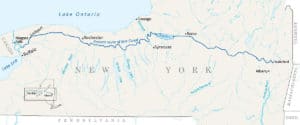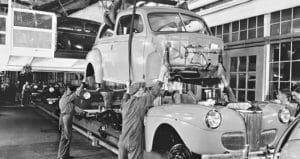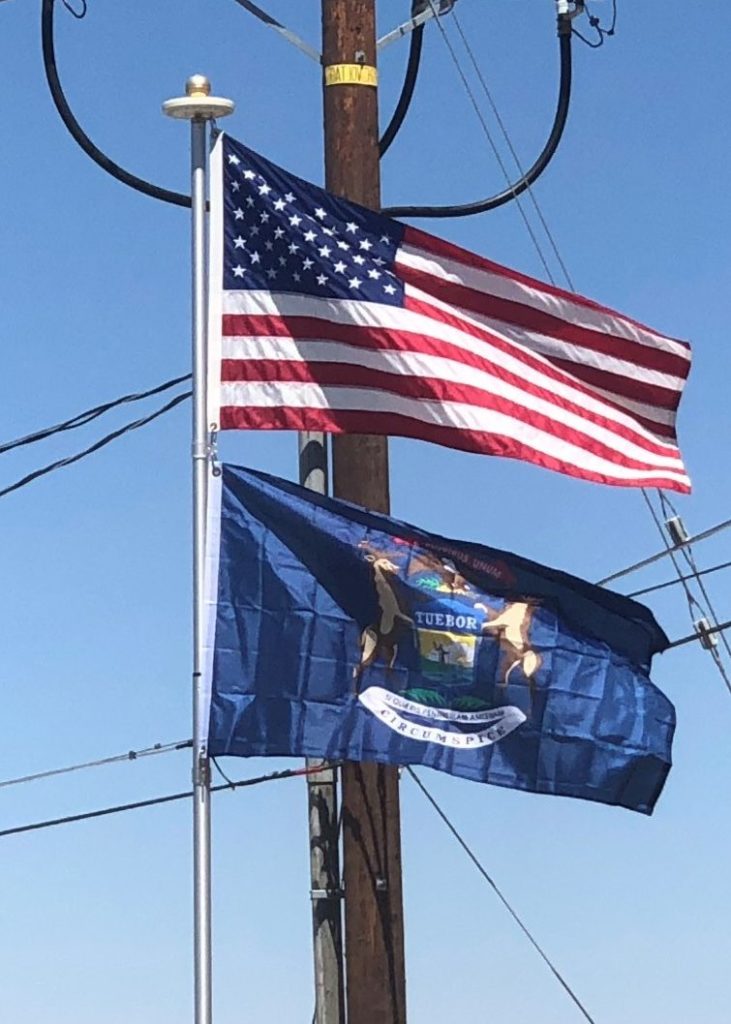Michigan was recaptured by Americans in 1813 after the Battle of Lake Erie. They used Michigan as a base to launch an invasion of Canada, which culminated in the Battle of the Thames. But the more northern areas of Michigan were held by the British until the peace treaty restored the old boundaries. A number of forts, including Fort Wayne, were built by the United States in Michigan during the 19th century out of fears of renewed fighting with Britain.
The population grew slowly until the opening in 1825 of the Erie Canal through the Mohawk Valley in New York, connecting the Great Lakes to the Hudson River and New York City.

The new route attracted a large influx of settlers to the Michigan territory. They worked as farmers, lumbermen, shipbuilders, and merchants and shipped out grain, lumber, and iron ore. By the 1830s, Michigan had 80,000 residents, more than enough to apply and qualify for statehood.
A Constitutional Convention of Assent, led by Gershom Mott Williams, was held to lead the territory to statehood. In October 1835 the people approved the Constitution of 1835, thereby forming a state government, although Congressional recognition was delayed pending resolution of a boundary dispute with Ohio known as the Toledo War. Congress awarded the “Toledo Strip” to Ohio. Michigan received the western part of the Upper Peninsula as a concession and formally entered the Union as a free state on January 26, 1837. The Upper Peninsula proved to be a rich source of lumber, iron, and copper.
20th and 21st Centuries:
Michigan’s economy underwent a transformation at the turn of the 20th century. Many individuals, including Ransom E. Olds, John and Horace Dodge, Henry Leland, David Dunbar Buick, Henry Joy, Charles King, and Henry Ford, provided the concentration of engineering know-how and technological enthusiasm to develop the automotive industry. Ford’s development of the moving assembly line in Highland Park marked a new era in transportation.

Like the steamship and railroad, mass production of automobiles was a far-reaching development. More than the forms of public transportation, the affordable automobile transformed private life. Automobile production became the major industry of Detroit and Michigan, and permanently altered the socio-economic life of the United States and much of the world.
Grand Rapids, the second-largest city in Michigan, is also an important center of manufacturing. Since 1838, the city has been noted for its furniture industry. In the 21st century, it is home to five of the world’s leading office furniture companies. Grand Rapids is home to a number of major companies including Steelcase, Amway, and Meijer. Grand Rapids is also an important center for GE Aviation Systems.
Geography:
Michigan consists of two peninsulas that are separated by the Straits of Mackinac. The 45th parallel north runs through the state—marked by highway signs and the Polar-Equator Trail.
The Great Lakes that border Michigan from east to west are Lake Erie, Lake Huron, Lake Michigan and Lake Superior. The state is bounded on the south by the states of Ohio and Indiana, sharing land and water boundaries with both. Michigan’s western boundaries are almost entirely water boundaries, from south to north, with Illinois and Wisconsin in Lake Michigan; then a land boundary with Wisconsin and the Upper Peninsula, that is principally demarcated by the Menominee and Montreal Rivers; then water boundaries again, in Lake Superior, with Wisconsin and Minnesota to the west, capped around by the Canadian province of Ontario to the north and east.
